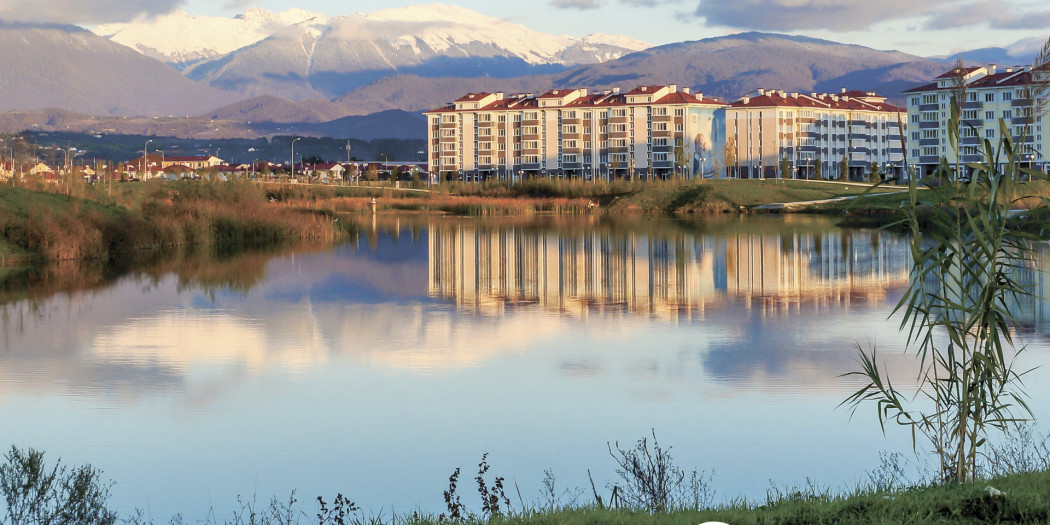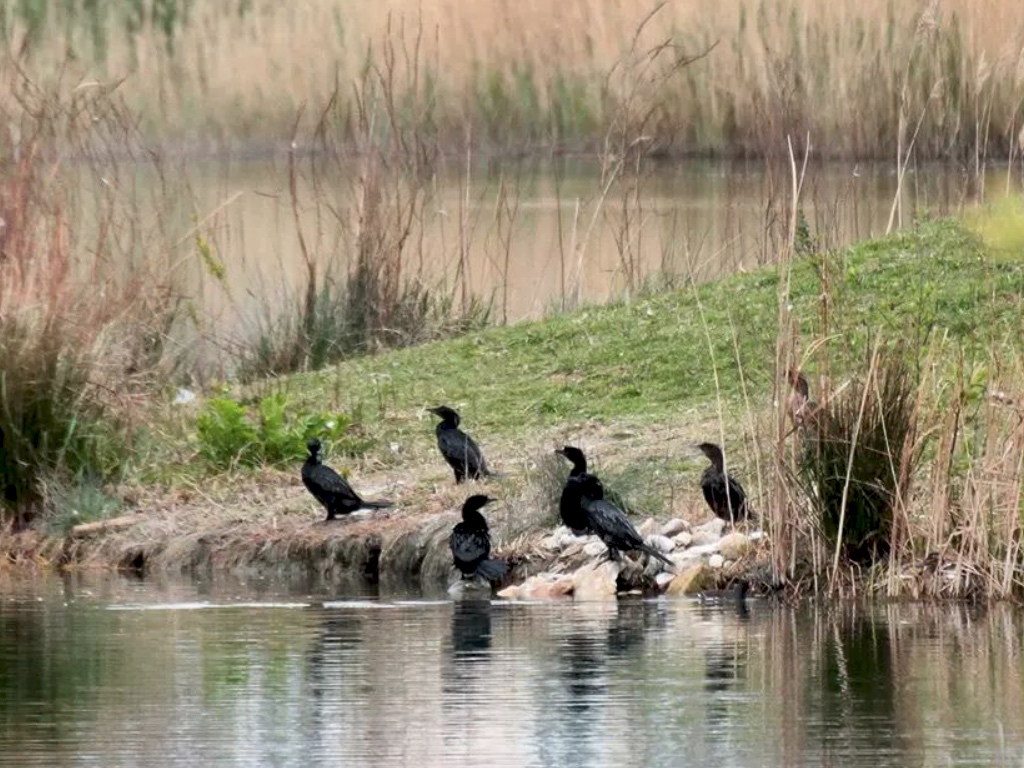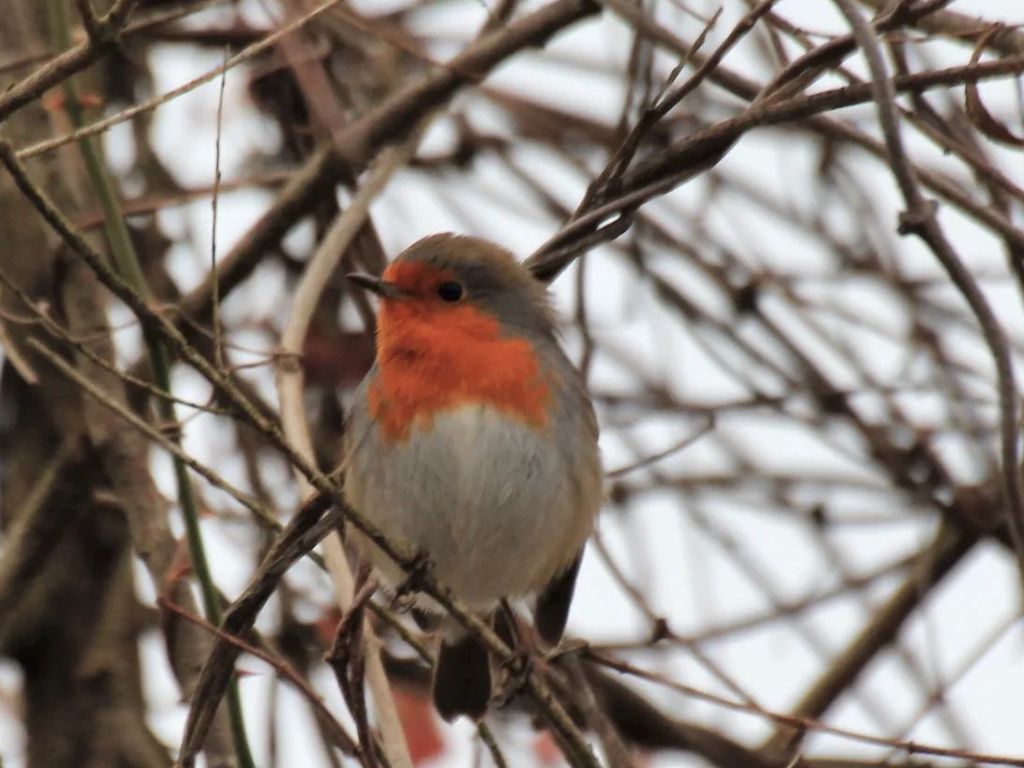Birds fly south
In the very centre of the Imereti Lowland, among the Olympic Games’ facilities and new hotels, large ponds are seen. Tourists love to come to this place, mothers with babies love to walk here enjoying the amazing expanse of the lake, lush pampas and the wood noisy with the song and chatter of birds. And few people pay attention that the popular walking area is a site of real special scientific importance. This is a Natural Ornithological Park and about 200 species of birds fly to this area for wintering. Daniil Pomorov, Director of the State Public Institution of the Krasnodar Territory “Natural Ornithological Park in the Imereti Lowland” speaks about why this Park is needed, how the 2014 Olympics have changed the lives of birds, and why there are increasingly more reports on the death of birds on the Black Sea coast.

- First of all, please explain why the Natural Ornithological Park was established in the Sochi’s Imereti Lowland?
- The Imereti Lowland is traditionally a key ornithological area of international importance where wintering grounds are preserved and intensive migration paths for many bird species pass through. Due to the preparation for 2014 Winter Olympic Games and holding the Olympics, the Lowland landscapes have undergone significant changes. Once there were agricultural lands here, and there are large sports and cultural facilities, hotels, and a whole network of modern roads now. To compensate for the changes, a specially protected natural area (SPNA) of regional significance was established in the Imereti Lowland - the Natural Ornithological Park, which consists of separate clusters surrounded by an urban landscape. The establishment of such a SPNA of regional importance was envisaged by the Application Book of Sochi as a compensatory measure aimed at minimizing the impact on ecosystems during the preparation for the 2014 the Olympic Games and holding the Olympics. Therefore, we can say that the Natural Ornithological Park in the Imereti Lowland is an Olympics heritage in the environmental protection, and its purpose is the restoration and preservation of the natural complexes in this area.
- Ponds in the Imereti Lowland are well known to tourists. What else is included in the Park’s area of responsibility? Are all the Park’s sites open to the public?
- The area of the Natural Ornithological Park is 298.59 hectares. It consists of 14 clusters, six of which are located on the low-mountain hills along the Psou River valley, and eight more are located directly in the Imereti Lowland in the Sirius Federal Territory. The fourth cluster of the Natural Ornithological Park is completely fenced and closed to the public due to the fact that the Colchis Swamps with pristine natural vegetation are under special preservation in this area. They are a favorite habitat for waterfowl and semiaquatic birds.

- The Ornithological Park is a place not only for walking, but also for research works. What researches are being made at the Park?
- The Scientific Department conducts regular monitoring of the avifauna, including an assessment of the species diversity, number of birds, tracking the characteristics of their migration, nesting and wintering. The state of rare and endangered species listed in the Red Books of various levels is assessed. To date, 207 species of birds inhabit the Natural Ornithological Park in the Imereti Lowland, which are migratory, wintering and nesting species, 32 species of them are rare. There are artificial nesting places - birdhouses and nest boxes - in the Park’s area for cavity nesting birds. They make up for the shortage of nesting habitats in the Park’s area due to the fragmentation of woody vegetation. Artificial nesting sites also make it possible to observe the nesting life of birds. One of the traditional methods for studying the birds’ migration, their migration routes and timing, as well as for clarifying the species composition is their capture and birdbanding. Every year, at the peak of spring and autumn migration seasons, the employees of the Scientific Department carry out work on catching birds with mist nets and birdbanding. The Ornithological Park is a kind of a research site for studying the changes in the composition of the ornithologic fauna under the influence of human activities. It also conducts research on the migratory characteristics of birds flying along the Black Sea coast. An important direction is the study of birds’ wintering in the conditions of low-lying coastal landscapes of the Sochi Black Sea region. The results of the researches are published in various peer-reviewed journals, collections of articles, international and all-Russian scientific conference proceedings. To date, the Ornithological Park employees has published more than 60 different research papers. Every year, a scientific conference “Sustainable Development of Specially Protected Natural Areas” is held at the initiative of the Natural Ornithological Park.
- What is the routine work of the ornithologists every day? What time of the day do the researchers consider best for observing the behaviour of birds? What are they doing? What months are best for conducting their research work?
- Ornithology is a natural science based entirely on communication with nature. The work of an ornithologist is associated with constant observation. People in this profession study birds in their different habitats. Ornithological researches also are connected with the birds that have adapted to life in big cities where they are forced to change their natural habits to be able to exist near humans. The ongoing research should give us new knowledge, surprise and motivate us to preserve and protect life on our planet. Perhaps, love for nature, especially for birds is the most important quality any ornithologist should have. Only a person sincerely interested in the life of birds is able to enjoy research, draw right conclusions, and, maybe, even make new scientific discoveries. The best time for observing the behaviour of birds is early morning and before sunset when the birds are most active and it’s easier to notice them. Observing the birds is carried out throughout the year, as different studies are carried out in all seasons, for example, in winter, our studies related to birds’ wintering, and we observe migratory birds in spring and autumn; also birdbanding is usually carried out in spring and autumn, and the research work related to nesting is carried out in summer.
- Who works in the Park? How many people?
- Our Ornithological Park is small and we have 19 employees. There are three main areas of activity such as the research activity, environmental education and compliance with the special protection regime. In addition to carrying out our research work, we protect the area of the Natural Ornithological Park to preserve the biological diversity and maintain natural complexes and objects in their natural state. Ground patrolling is carried out daily.
Due to the location near the popular attractions, our Ornithological Park is increasingly visited by guests, including the younger generation. Therefore, environmental education of locals and tourists is one of our priority tasks. We hold various environmental events and thematic sessions on a regular basis, timed to coincide with the significant environmental dates. Every year, the Park’s action plan provides for at least 35 environmental education events, and additionally, excursions around the Natural Ornithological Park are held every month.
- The Imereti Lowland has always been considered an area for migratory birds, how much has the situation changed due to the development of the area?
- The main reason for the decline in the number of birds and for the disappearance of species is the destruction of natural habitat areas of the species or the construction work carried out in the Imereti Lowland. Humans often make a direct or indirect impact through building cities or some big facilities in the natural areas and simultaneously reducing and destroying many species of plants and animals. The example is the Imereti Lowland and the anthropogenic impact on it due to the construction of the Olympic Games’ facilities. The area of wild nature was reduced by 15 times. However, in the Imereti Lowland, “islands” of nature remained, which belong to our Ornithological Park. And long-term studies show that the number of many bird species has decreased, indeed, but the species diversity is gradually increasing every year, even some species appeared that have not been recorded in the Imereti Lowland before. Therefore, when humans develop natural areas, it is necessary to leave “green islands”, ideally, those landscapes that originally existed there.

- How many bird species did stay for wintering in the Natural Ornithological Park this year? Are any of them rare? Have new species of birds appeared, which species have disappeared?
- 68 out of the 207 species that “arrived” for wintering are considered wintering species, that is, they are seen in the Ornithological Park during the wintering season, they fly to our Ornithological Park in search of food, underwater and coastal vegetation, invertebrates and various fish for waterfowl and semiaquatic birds, and in search of water bodies not covered with ice. Nine species wintering in the Imereti Lowland have a high conservation status and are listed in the Red Books of the International Union for Conservation of Nature (IUCN), as well as the Red Books of the Russian Federation and the Krasnodar Territory. As a rule, wintering season begins in the second half of November when the birds begin to appear in the Imereti Lowland to stay for a winter. The maximum number of birds is in January-February, from mid-March the birds’ number decreases, and by mid-April, wintering birds leave the Imereti Lowland.
Many species of birds are not able to exist next to humans and therefore, they leave their habitats. For example, after the Olympic facilities construction in the Imereti Lowland, some species were not observed here such as black stork (Ciconia nigra), greater golden plover (Pluvialis apricaria), common grosbeak (Coccothraustes coccothraustes). However, at the same time, after the Olympics, more than 20 species of birds appeared, which earlier, before the construction of the Olympic Games facilities, were not observed in the Imereti Lowland such as buff-backed heron (Bubulcus), black-tailed godwit (Limosa limosa), masked shrike (Lanius nubicus), gold-crested wren (Regulus regulus), etc.
- Have the bird migration patterns changed after the 2014 Olympics?
- No, they haven’t. The migratory route, along which birds fly from south to north and from north to south in spring and autumn, respectively, runs along the Black Sea Coast.
- Do you support birds in winter and how? Can you give some advice to those who want to take care of birds in winter?
- Since the natural habitats and conditions of existence of many bird species were significantly changed during the preparation for the 2014 Winter Olympic Games and holding of the Olympics, a complex of biotechnical measures is being carried out at the Ornithological Park. In particular, we regularly provide bird feed in winter when the natural resources are reduced. In addition, bird feeding is carried out during the periods of spring and autumn migration when their species diversity and abundance in the Natural Ornithological Park is maximum.
Probably the most important thing that we want to convey to you during our talk is a competent and conscious attitude towards birds and nature. For example, wintering birds in the city can be fed, but this should be done correctly. Often, the first thing that comes to everybody’s mind is bread, but in large quantities bread is harmful to birds and causes problems with their digestive system. It is best to use grains as feed like wheat, oats, sunflower seeds, but not fried and, of course, not salted. They can be purchased at pet stores or in farm shops. It is necessary to remember about the right behaviour during nesting time, so as not to harm the growing chicks while “helping” them. By observing all these simple rules, we can help the birds live in the city, and we can enjoy their beauty and the birds’ songs.
- This year there were a lot of messages on social networks about dead birds, what is the reason for this phenomenon and how can we fight against this?
- The winter of 2020-2021 was cold, which resulted in a greater number of birds that flew to Sochi for wintering than in previous years when the winter weather was milder. It should be taken into account that together with healthy birds, both sick and old ones arrive, which, if the weather conditions worsen, are not able to survive. For the same reason, on the Black Sea coast and near the Sochi’s large rivers, from early February to mid-March, the local residents and guests of the city saw dead birds that died due to severe weather conditions such as a storm, a rise in the level and speed of the flow of rivers, and etc. Also, one of the causes of natural deaths in birds are predators like buzzards (Buteo buteo), sparrow-hawk (Accipiter nisus), marsh harrier (Circus aeruginosus), gray crows (Corvus tristis) and stray animals, and sick and old birds can be their victims.
- Tell us a little about such an unusual activity as birdwatching, I know that you even hold competitions...
- Birdwatching is a popular hobby in many countries around the world. Everyone can do this. Everyone finds something in this hobby that is to his or her liking. Whether you want extreme experiences or, on the contrary, serenity and peace - bird watching will suit you equally. We promote birdwatching among schoolchildren. We hold competitions in sports ornithology, they develop observational and research skills, and also contribute to improving their health, developing the ecological culture and improving their spatial orientation skills.
In the Imereti Lowland, you can observe birds of various ecological groups. The lakes are the best place to observe semiaquatic and waterfowl. Birds living in trees and shrubs are easiest to watch in thickets of shrubs and clumps of trees. The vast lawns of the Natural Ornithological Park during the migration season attract a large number of birds that like open spaces and many predators that are active in daytime.
Get up early, be silent and overslip, try not to draw attention to yourself. You should dress in comfortable clothes of plain colours, walk quietly, avoiding talking, do no sudden movements. Try to have the sun behind you. When you see a bird, do not approach it straight, try to slowly approach it in an “arc” as if you were walking past. Watch the bird’s behaviour, and if you see by its movements that it is ready to fly away, stop slowly and step back a little, let it calm down and feel that you are not a threat. When the bird gets used to your presence and continues its normal activities, you can try to cautiously approach closer. Sometimes watching from a car can be effective. Usually, birds let a car approach closer than the pedestrians.
A beginner-birdwatcher needs only two things: a bird guide book and binoculars. It is best to use binoculars with 8x or 10x magnification, lightweight, compact, and rubber coated. If you plan to watch birds at dusk, you should use binoculars with a relative brightness greater than 15.
All birdwatchers keep a list of the species they have watched in nature - this checklist is the main birdwatcher’s document showing their success.
If you plan to take photos of the birds you watch, you will need a compact superzoom camera or a reflex camera and a telephoto lens.
- The Ornithological Park has become a tourist attraction in recent years. What attracts the people to your Park and do you have regular visitors. Are regular visits possible in a specially protected natural area? How should the visitors behave?
- Locals and the peoples staying at the resort often come to our Ornithological Park to take a break from the bustle of the city and to be ‘alone’ with nature. Many people come for a walk with their children. In the Natural Park, there are several aviaries with birds, and one can enjoy birdwatching regardless of weather.
Throughout the Park, we have placed information stands and local information boards telling our visitors about the local flora and fauna, as well as about the special protection rules in the Natural Ornithological Park and the need to comply with certain restrictions. For example, it is forbidden to ride bicycles and scooters, walk dogs, walk on lawns and feed wild birds, fish and swim in water bodies.




